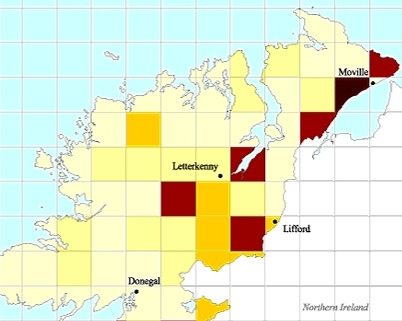|
|
Inishowen radon gas risks highlighted
02.03.09
Council should test
their housing stock for Radon
DONEGAL County Council have been asked to do more to
highlight the risks posed by exposure to radon gas.
The request comes from the Oireachtas committee on
the environment, which last week heard one of
Ireland’s foremost experts on Radon gas warn that
the health hazards posed by radon are still being
greatly underestimated by the public.
Dr Tony Colgan, of the Radiological Protection
Institute of Ireland (RPII) pointed out that between
150 and 200 lung cancer deaths were related to radon
exposure every year, compared with some 400 road
deaths. However spending on road safety far exceeded
the amount spent on radon safety.
According to 2008 World Health Organisation figures,
Ireland ranks sixth in the world for the highest
average radon gas levels.
The Oireachtas committee said it would write to
local authorities to ask what they were doing to
highlight the health risk. |
 |
“We will write to local
authorities to ask what they were doing to highlight
the issue and to establish whether builders were
following regulations in including radon sumps or
barriers in new homes,” said Committee vice-chairman
Pádraic McCormack.
Speaking to the Inishowen Independent, the
Radiological Protection Institute’s David Dawson
said that Donegal County Council should consider
following Cork County Council’s lead and measure
radon levels in their housing stock.
“Cork County Council’s measures are something that
could be rolled out nationally by other local
authorities,” he said.
Radon, a radioactive gas, enters homes by rising
from the soil. It is particularly high in certain
pockets of the country such as the southeast and the
west. More than two-thirds of the radiation dose
received by the average person in Ireland is due to
radon.
After smoking, long-term exposure to radon gas in
the home is the greatest single cause of lung cancer
in Ireland.
Some areas of Inishowen, particularly in and around
Moville, have been classified as high radon areas.
“Mr Dawson said if you would like to have your own
home tested for radon you can apply for a simple
test to detect radon in a home, shich costs €56 from
the RPII.
“It’s all done by post. You will receive two radon
detectors, one of which should be placed in the
living room and the other in a bedroom. After three
months you post them back to us,” said Dawson, who
added that advice will be issued to those at risk on
how they can reduce the radon levels in their home,
by installing increased ventilation or a radon sump,
the kind routinely fitted to new homes built,” he
said.
To date the RPII only has tested around 33,000
houses out of an estimated 1.7 million units
nationwide. (Inishowen
Independent) |
|

